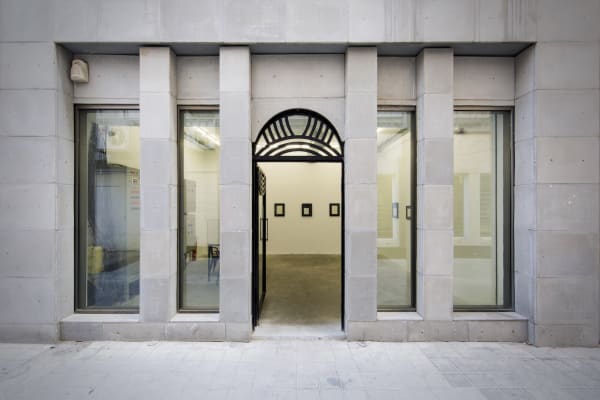Amir Farsijani | "Jersey Barrier": Electric Room 26/50
-

"HORMOZ HEMATIAN & ASHKAN ZAHRAEI, Electric Room, art under high tension"
Anahita's Eye December 11, 2018Anahita's Eye has recently published an interview with Hormoz Hematian and Ashkan Zahraei discussing the 50-project long program of Electric Room (in EN, FR, DE)....Read more -

"Shifting Perspective from Art to Research"
Tosee Irani October 21, 2018Tosee Irani have recently published an article by Alireza Bakhshi Ostowar on the Electric Room (in Farsi). Click here to read it in full.Read more -

"Experimental Art Can Stand Independently"
Honaronline October 14, 2018Honaronline have recently published an interview with Ashkan Zahraei discussing The Electric Room project (in Farsi). Click here to read it in full.Read more
Dastan is pleased to announce “Jersey Barrier”, a presentation by Amir Farsijani at Electric Room. The show will be open to public view from February 9 to 14, 2018.
Amir Farsijani (b. 1988, Tehran, Iran) is a multidisciplinary artist who mostly works in photography and installation with a conceptual approach. He is a graduate of graphic design. Daily urban experiences play a major role in his initial approaches to his works. The first step is the documentation of whatever is considered as standards of urban life. He explains that by using photography for documentation, he can more easily go back to the spaces he has been to.
Amir Farsijani usually works with urban objects, and the city is his ‘raw material’. In “I am an Athlete” (first shown at “Enghelab Street”, 2015, ZK/U, Berlin), he created three sculptures and installed them on the surrounding fencings of Tehran’s Valiasr junction —fencings that have limited the transit pathway of citizens in one of the most important and crowded crossroads of Tehran. Continuing his work, Amir created a 7x8m maze in the gallery space modeled conceptually on Valiasr pedestrian underpass (“Foldings”, 2016, Tarahan-e-Azad Gallery, Tehran).
A “Jersey Barrier” is a concrete barrier designed in the 1950s by Stevens Institute of Technology for the state of New Jersey. The current presentation consists of three installations base don Jersey Barrier: a memorial for a teenage girl killed in a 2014 accident in Tabriz involving a Jersey Barrier; a second installation based on photo documentations of barriers, and a moving installation.




